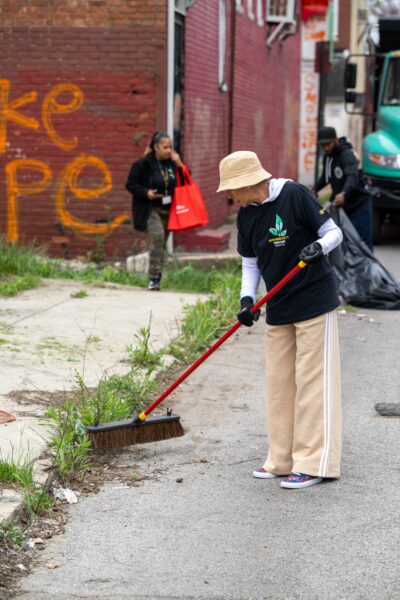Thanks to the Trash Wheel family, Baltimore’s harbor is famous for solar-powered inventions that help waterways. The latest addition will bring a new tool to help the health of the Chesapeake Bay: oysters.
Solar Oysters, a venture developed through a joint venture between the Maritime Applied Physics Corporation and the EcoLogix Group, Inc., created an automated aquaculture platform to help bivalves grow.
On Thursday, members of the team from the venture and Chesapeake Bay Foundation (CBF) loaded about 300,000 spat-on-shell oysters onto the platform in the harbor.
Using solar power, the platform has tools to rotate the large cages where the oysters are growing and clean them. Once they are grown, the oysters will be added to sanctuary reefs that are designed to improve the health of the Bay, and grow its population. Oysters are natural “filter-feeders,” so expanding their ranks is a line of defense against nitrogen, and other kinds of chemicals that lead to algal blooms that cut off oxygen and wreak havoc on marine life in the Bay. Plus, the native oyster population has dropped due to a combination of factors both manmade and natural, according to the Chesapeake Bay Program.
Solar Oysters’ platform is in a testing phase. It followed a route familiar to Baltimore startups as local business-building resources stepped up to help. It received $150,000 in grant funding from the Abell Foundation, and becoming a member of the aquaculture-focused F3 Tech Accelerator.

Drone footage of the Solar Oysters platform. (Courtesy photo)
“While benefiting Baltimore reefs, the lessons we learn here will inform our work as we look to expand to new sites and apply the technology to the oyster aquaculture industry,” Solar Oysters Business Manager Stephen Pattison said in a statement. “This technology could help reduce Maryland’s target nitrogen reduction shortfall (2009-2019), which the EPA has mandated that Maryland must advance by 2025 to remain on target.”
It has also formed partnerships with the environmental groups like the Bay Foundation and the Chesapeake Oyster Alliance. The oysters will add to the number of bivalves that CBF can add to its reef near Fort Carroll, which is located just outside the harbor.
“The number of oysters we’ll be putting on the Solar Oyster platform is equal to the number of oysters we raise each year with volunteers in the Harbor through our oyster gardening program,” said CBF Maryland Senior Scientist Doug Myers. “This effectively doubles the number of oysters we can put on the sanctuary reef each year. Those oysters will enable the reef to filter more water and provide additional habitat to fish, crabs, and other marine life.”
Join the conversation!
Find news, events, jobs and people who share your interests on Technical.ly's open community Slack

Baltimore daily roundup: Film fest spotlights cinema's immersive frontier; over $1M for a wellness startup; $2B to rebuild the Key Bridge

Baltimore daily roundup: Key takeaways on the local tech ecosystem; a video editor's path to working with Keke Palmer; BCIT's new podcast

Baltimore daily roundup: 20 people building Baltimore's innovation community; a local startup's $15K win; the USMC's new tech office


